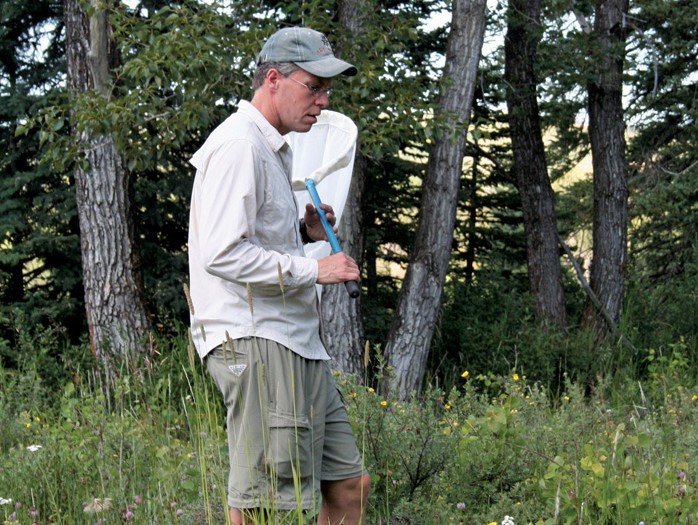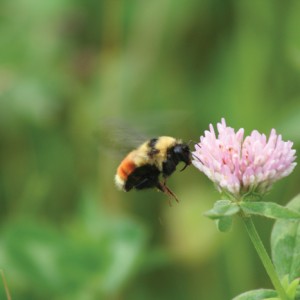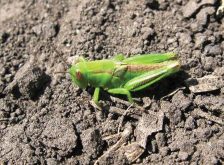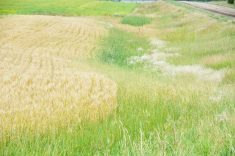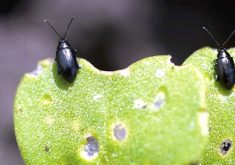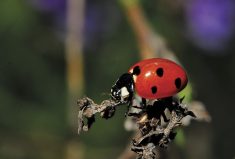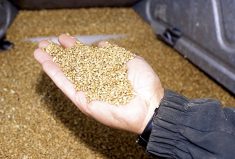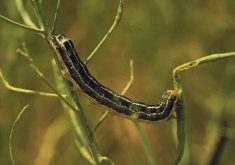It’s crop-planning season and that means it’s a good time for making plans to create a wild pollinator habitat near your crops.
Having a strong pollinator population can offer a benefit to crops, said Mark Wonneck, an ecologist at Agriculture and Agri-Food Canada in Calgary.
Bees are an important part of both alfalfa production and hybrid seed production in canola. And some studies have found commodity canola is also pollinated by bees. Pollination service has been used in canola production, haskap and saskatoon production. Even though alfalfa production is usually supported through the use of leafcutter bees, other bees pollinate alfalfa seed.
Some research has shown that healthy pollinator populations can boost yields of some crops.

“In the case of commodity canola, when you have more complete pollination, you will get more seeds produced,” said Wonneck.
“Whether you get increased yield is sort of a debate that is going on around out there. You may get more seeds, but the seed size may not be as big. But one of the other possibilities is more complete maturation.”
About 75 per cent of flowering plants depend on insect pollinators, and other crops that benefit from them include borage, canary seed, sunflowers, soybeans and small fruit crops
In order to keep pollinators around your place, it’s important to maintain diversity in the natural areas. Having native plants like asters and goldenrods along the edges of fields can help them survive.
Read Also

Mosquito-borne virus could be devastating to sheep breeding operations
Cache Valley virus, a mosquito-borne disease that infects small ruminants, could be a devastating hit to small operations.
“When you have rich field margins, you’ll be conserving or benefiting pollinators — but in addition to that, there’s more research coming out on beneficial insects in general, such as the natural enemies of pests,” said Wonneck. “They get more natural enemy pest control with diverse habitat around fields. So there are indirect benefits to the farmer as well, instead of just to the environment.”
Agriculture Canada has information on how to create and protect habitat for pollinators in a booklet entitled Native pollinators and agriculture in Canada.
Pollinators need access to nearby flowers, as well as overwintering and nesting sites, which can include untilled areas, deadfall, trees, hollow-stemmed plants, mud and water. Native plants are of special importance to wild pollinators.
Honeybees play an important role, but so do wild bees. There are more that 323 wild bee species, with 299 found in the Prairie ecosystem. All of Alberta’s 28 species of bumblebee are native and can be identified by their large, hairy appearance. Other types of native bees range in size. Western leafcutter bees and andrenid are the same size as honeybees, but there are also tiny little bees about four millimetres long. While some live in small colonies, others are solitary.
All of the bees require some sort of flower for pollen and nectar, but the amount of time they require flowers can vary.
Bumblebees need flowers from April to September, while others only need flowers for a few weeks in the summer. Some types, like bumblebees, are generalists and can feed on any flower, while others need a specific type of flower in order to be able to survive.
Bees aren’t the only insects that can act as pollinators. Adult wasps are vegetarian and collect pollen and nectar for food. But their pollination capacity is limited.
“They do a lot of pollination, but they’re not as efficient as bees,” said Wonneck.
Hoverflies, which dart about like small helicopters, are important pollinators for shallow-bowled flowers. Beetles, butterflies and moths are not highly efficient pollinators, but all of them have some pollination ability.


